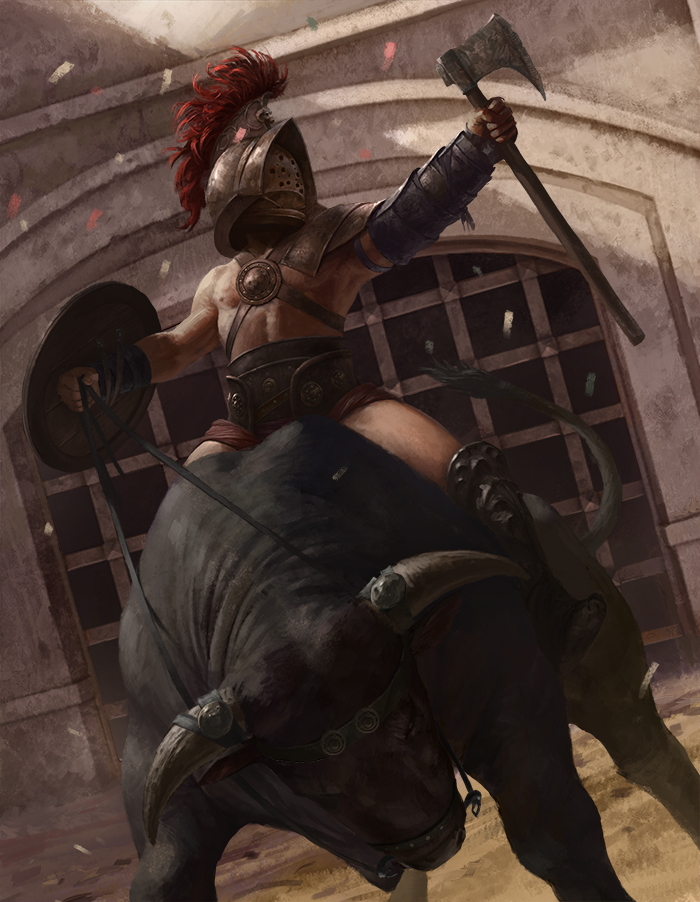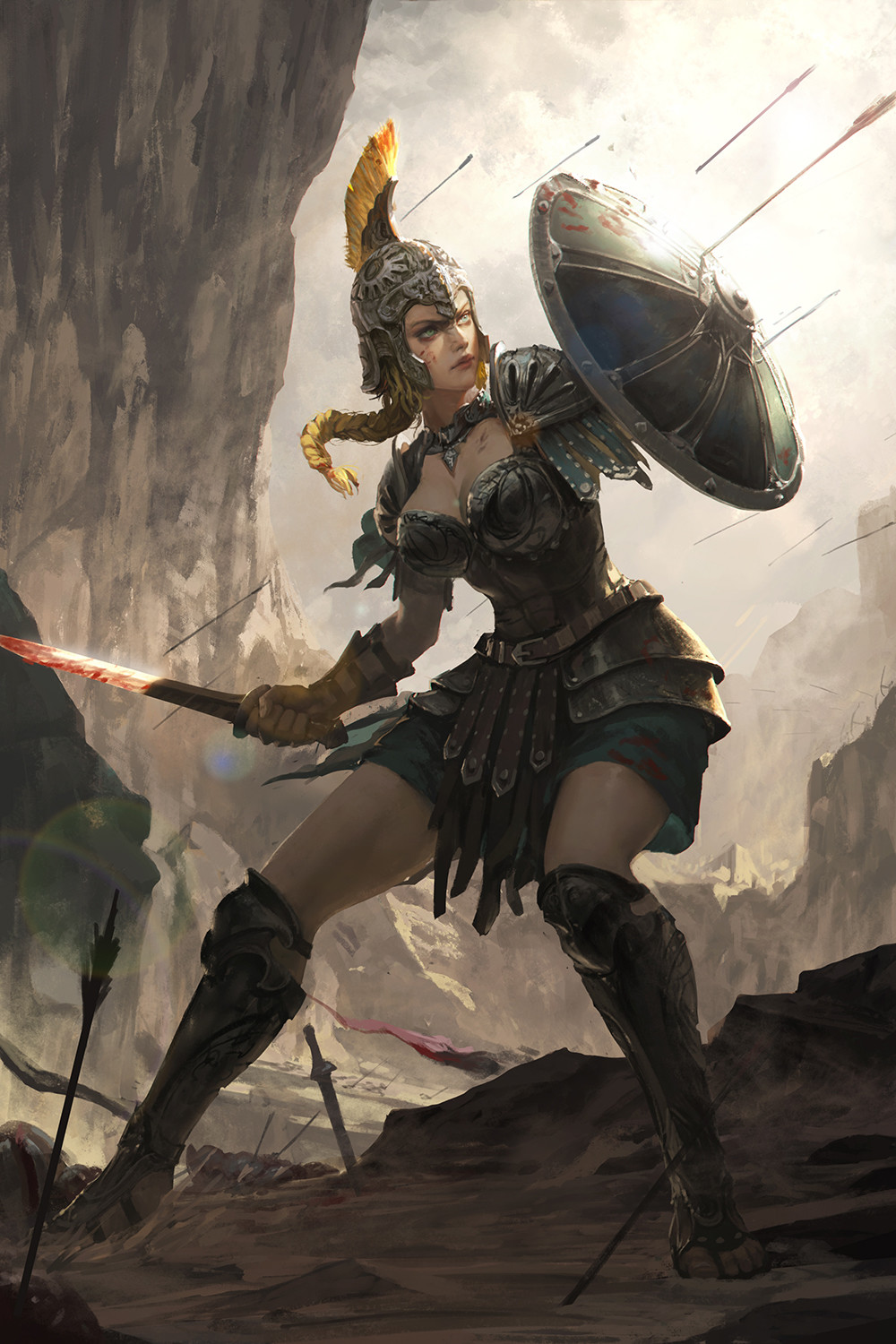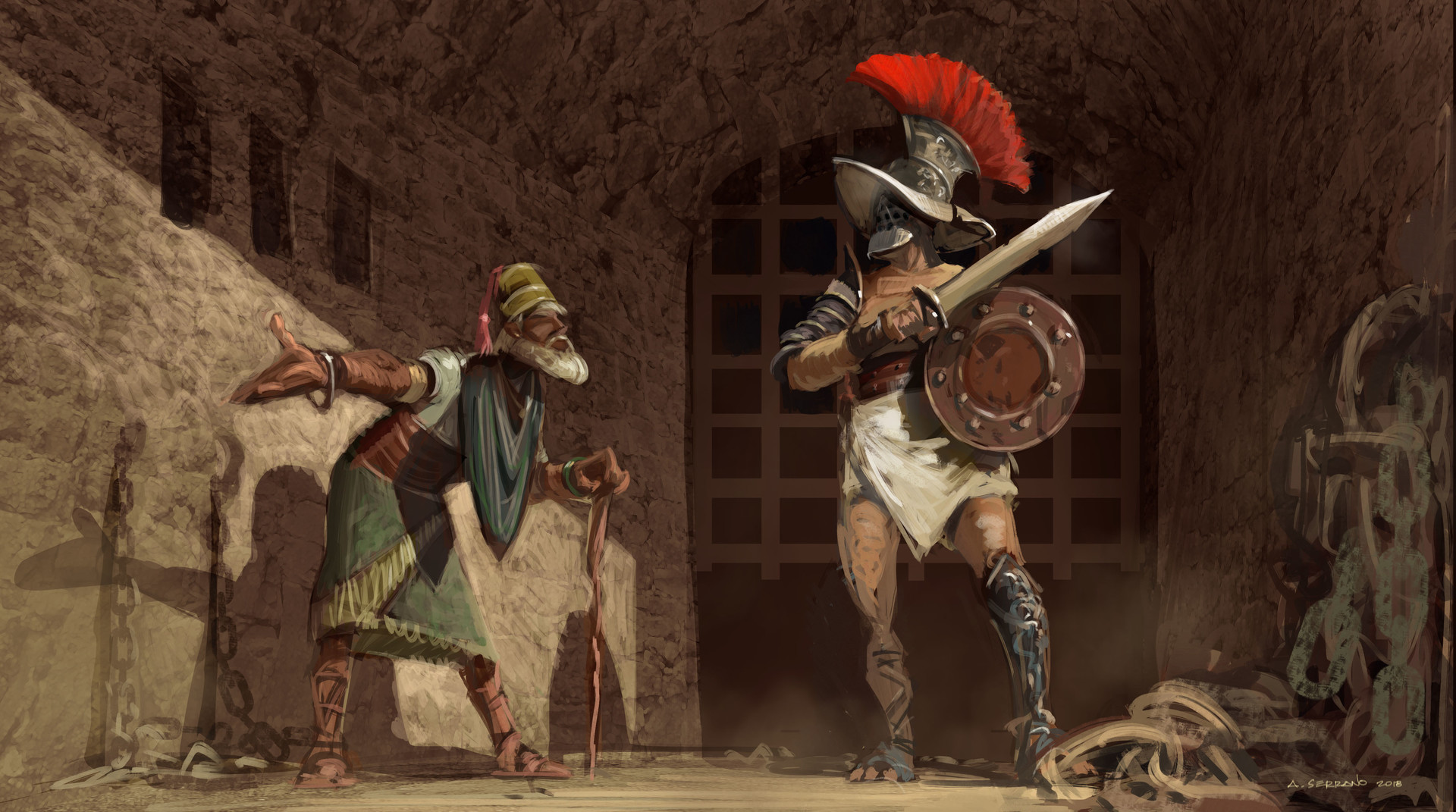Gladiators
Gladiators were armed combatants that fought in arenas during the First Tallian Empire. Their battles served as the most popular form of entertainment within the empire.

History

Gladiator by Ilker Serdar Yildiz
A gladiator riding upon a ox, being a part of the "Beastmaster" class of gladiators.
During the days of the first Tallian Republic and the first Tallian Empire, the government struggled what to do with their prisoners of war since they conquered much of Dragoncrest. One idea sparked when soldiers enjoyed seeing a brawl between two prisoners. Somehow, the Tallians converted this into an actual show. Soon, it grew in popularity, with folk of all backgrounds and professions being taken in as gladiators to pay off debts or fight in the area as a form of execution.
During the reign of Emperor Gnaeus when the island of Myrna was conquered, their popularity soared more than ever as Amazonians were enlisted into the gladiatorial fights. They soon became staple fighters within the arena, some of them even becoming patrons and finding their own fighters to match on. The fights became more and more extensive, to the point where the government funded them, and mass betting took place on some of the matches.
Types of Gladiators
An Amazonian gladiator, wearing Hoplomachus armor to signify she a heavily armed fighter.
There were several types of gladiators in Tallia, the classes telling of their background and fighting style to make audiences more aware of the personalities of the combatants. A few include the following:
The Hoplomachus, a warrior from Madeci, was often armed with a gladius and heavy armor, though this was not necessary. If they were a quicker fighter, they tended to dress in leather armor and used their dexterity against their strong opponents.
The Beastmaster was a "wild warrior", a so-called outlander. They would be dressed in leather armors or armor like half-plate to give them a barbaric look. They would be paired with animals, or fought against them.
Murmillio were "mariners", people who were either pirates or fished, were given weapons like nets and a trident to give an exotic look. Sometimes, Tritons were placed into this background as well. They were given light armor to fight in.
Provacator were heavily armored gladiators, often being Tallian in background. They often wore a breastplate and fitted helmet to look like a legionary soldier, and were equipped with longswords and shields.
Veles were dressed as barbarians. They wielded heavy weapons or spears. They often would fight with sheer rage and allowing their blood to spill, and thus were popular among the audiences. Often half-orcs took up this mantle.
Essedarius were those who rode chariots in the arena to fight. Many of them were former cavalry men. They could be equipped however they desired.
Sagitarrius were fighters who often utilized ranged weapons, like the bow, into their fighting style. They were given leather armor for their switfness.
Bustuarius were "tomb fighters", those gladiators who served for funeral rites. This class was seen as important, due to the Tallian superstition of the dead and their souls passing onward. These gladiators would speak to former gladiators who died in battle, and were rare, so demand for them was high.Career
Qualifications
Gladiators were often chosen from what many citizens of Tallia considered "lowly": the class of slaves, non-citizens, or reviled criminals. Either this, or they were prisoners of war. They had to be fit and healthy, but they could be anyone from any race. For the criminal, these games could be used as a form of execution or redemption; the latter being a result of their skill and wit making them quite popular to the crowds of Tallia. For slaves, this career could be a path to freedom. For the non-citizen, this position could be a path to public acknowledgement.
Career Progression
Often, when gladiators progressed through the ranks, they would start to find patrons (nowadays these would be more like "sponsors") for their duels, high class folk who were interested in sharing some of the profit with the gladiators as well equipping them with better gear. A gladiator was seen as proud and mighty when they had a sponsor, and these ones would get higher bets in their favor. These gladiators would grow into powerful celebrities, sometimes even having their pictures used for advertisements.
Payment & Reimbursement
Gladiators were paid quite well for their performances, though this depended on the tier of championship. Lower end gladiators were given a 1% pay of the earnings, while the greatest of the gladiators got a 10% pay. Some payments could also being earning citizenship or being freed from the status of a slave.
Other Benefits
Surprisingly, gladiators had good health care. Their patrons, the wealthy Tallian elite, would ensure they were bathed, cleaned, and well-fed before they would go into their shows. After all, your gladiator would die if they were unhealthy. Another benefit is that, if you were charismatic and a good fighter, you could get celebrity status.
Remove these ads. Join the Worldbuilders Guild






Comments